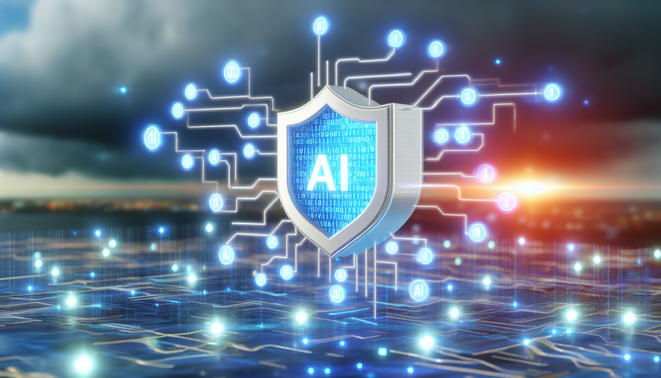The Role of Artificial Intelligence in Cybersecurity
The integration of artificial intelligence (AI) in cybersecurity is transforming the modern security landscape by enhancing threat detection, response times, and overall security protocols. AI systems can analyze vast amounts of data far more rapidly and accurately than human analysts, allowing for real-time identification of anomalies and potential threats.
One of the most significant benefits of AI is its ability to learn from previous attacks, improving its predictive capabilities. For example, machine learning algorithms can evaluate patterns in user behavior, enabling the detection of unusual activities that may indicate a breach. According to a report by IBM, organizations that implement AI technologies can reduce the time to detect a data breach by over 90%.
Moreover, AI can automate routine security tasks, freeing human experts to focus on more complex challenges. This advancement is critical as the cybersecurity workforce faces significant shortages, with an estimated 3.5 million positions unfilled globally.
Furthermore, AI can enhance response strategies through automated incident responses, allowing organizations to react instantly to threats as they occur. In a landscape where cyber threats evolve rapidly, AI’s ability to adapt and improve is essential. According to Forbes, 80% of cybersecurity leaders believe AI is integral to their security strategies going forward.
In summary, the importance of AI in modern cybersecurity cannot be overstated. By improving threat detection, response times, and operational efficiencies, AI stands as a crucial ally in the ongoing battle against cybercrime.
Emerging Technologies Enhancing AI Security
Emerging technologies and methodologies are crucial in enhancing AI security, addressing various vulnerabilities inherent in traditional AI systems.
Federated Learning enables machine learning models to be trained across decentralized devices while keeping data localized. This reduces risks associated with data exposure and enhances privacy, making it a promising solution for secure data handling. Recent studies have shown that federated learning can significantly improve data privacy without sacrificing model accuracy, creating a more secure environment for sensitive information [Source: Google AI Blog].
Secure Multi-Party Computation (SMPC) allows multiple parties to jointly compute a function over their inputs while keeping those inputs private. This technology is particularly useful for collaborative scenarios where data cannot be shared openly, such as in healthcare or financial sectors. Research indicates that SMPC can effectively mitigate risks associated with data breaches during collaborative operations, offering a layer of security that is essential for trust in AI systems [Source: Wikipedia].
Explainable AI (XAI) focuses on developing AI systems that provide transparency and clarity in their decision-making processes. This is vital for building trust among users and stakeholders. By enhancing interpretability, XAI helps identify potential biases and security flaws within AI algorithms, ultimately improving overall security measures. Techniques such as LIME (Local Interpretable Model-Agnostic Explanations) and SHAP (SHapley Additive exPlanations) have emerged as effective tools for providing insights into model predictions [Source: Nature].
These methodologies collectively contribute to a more robust AI ecosystem, emphasizing the importance of security, privacy, and trust in machine learning applications. Continued research and development are essential to fully realize their potential in safeguarding AI systems.
Conclusion
The intersection of AI and cybersecurity is rapidly evolving, providing organizations with innovative tools to combat ever-changing cyber threats. Emphasizing modern methodologies such as federated learning, secure multi-party computation, and explainable AI not only enhances overall security but also builds trust and efficiency in cybersecurity practices. As these technologies advance, they will play a pivotal role in shaping the future of secure digital environments.
Sources
- Google AI Blog – Federated Learning: Collaborative Machine Learning without Sharing Data
- Wikipedia – Secure Multi-Party Computation
- Forbes – The Future of AI in Cybersecurity
- IBM – Artificial Intelligence in Cybersecurity
- CyberSeek – Cybersecurity Workforce Gap
- Nature – Explainable AI (XAI): Why it matters



